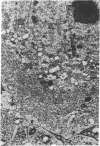Abstract
Fragments of the anterior hypothalamus that contain supraoptic nuclei and short axonal segments from adult guinea pigs have been kept in organ culture for up to 15 days. Electron micrographs displayed intact nuclei, Nissl substance, Golgi bodies, and an ultrastructure characteristic of viable neurosecretory cells; by contrast, the surrounding neurophil showed extensive degeneration. The cultured hypothalamic tissues of the guinea pig that were pulsed with [3H]uridine incorporated label into the RNA of neurosecretory neurons, as determined by radioautography and chemical analysis. Furthermore, and most important, these cells retained a complement of hormones and the ability to incorporate 3H- and 35S-labeled amino acids into vasopressin, neurophysin, and other polypeptides. This incorporation was inhibited by either puromycin or cycloheximide.
Keywords: hypothalamic median eminence, paraventricular nuclei, guinea pig, electron microscopy
Full text
PDF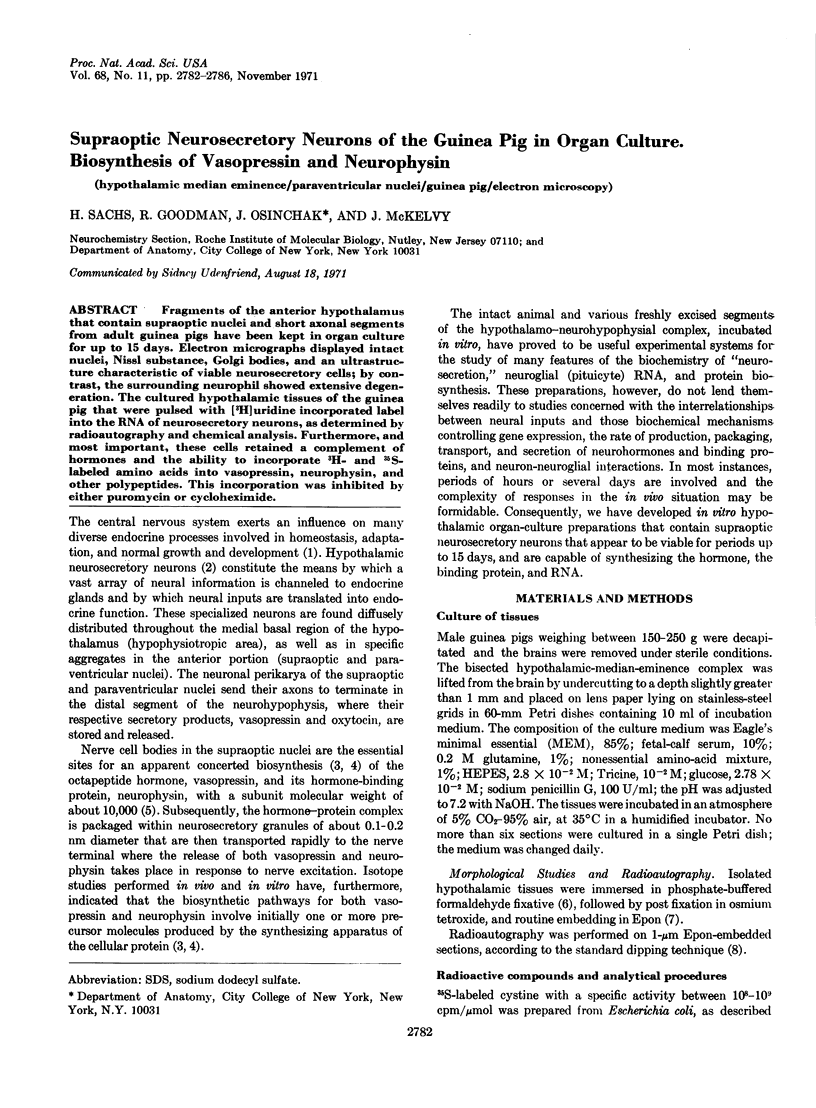

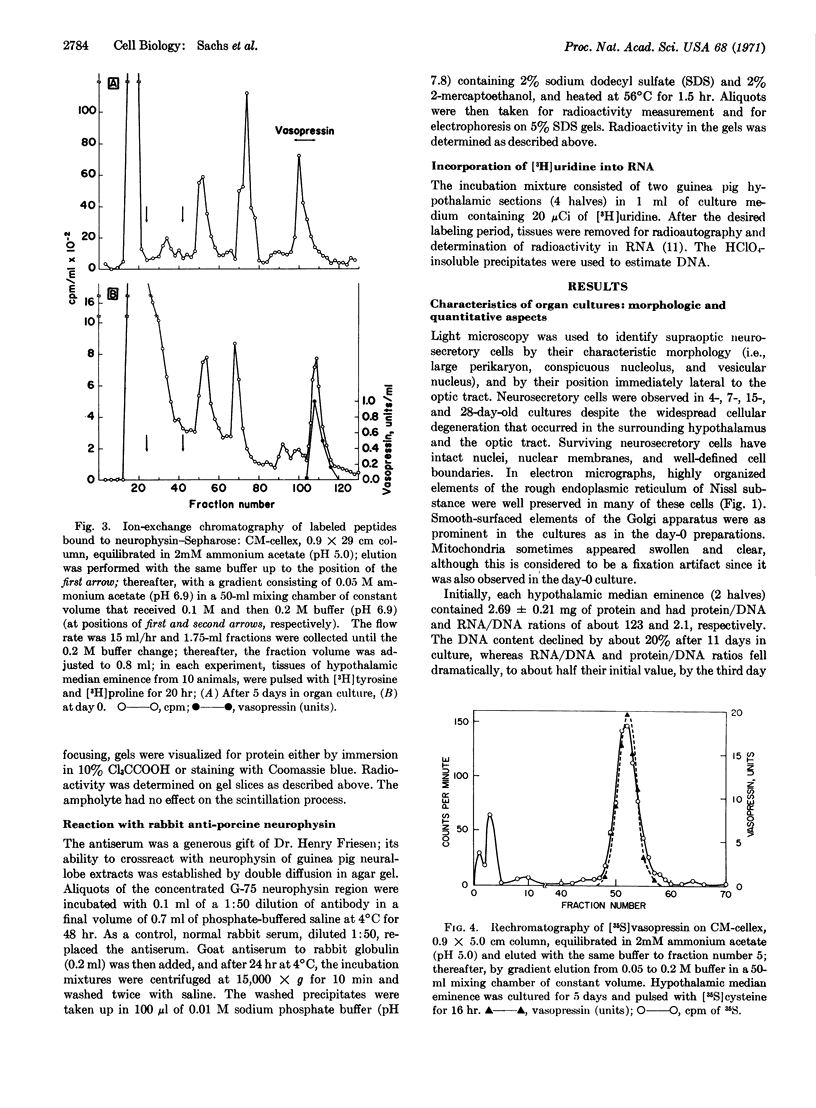
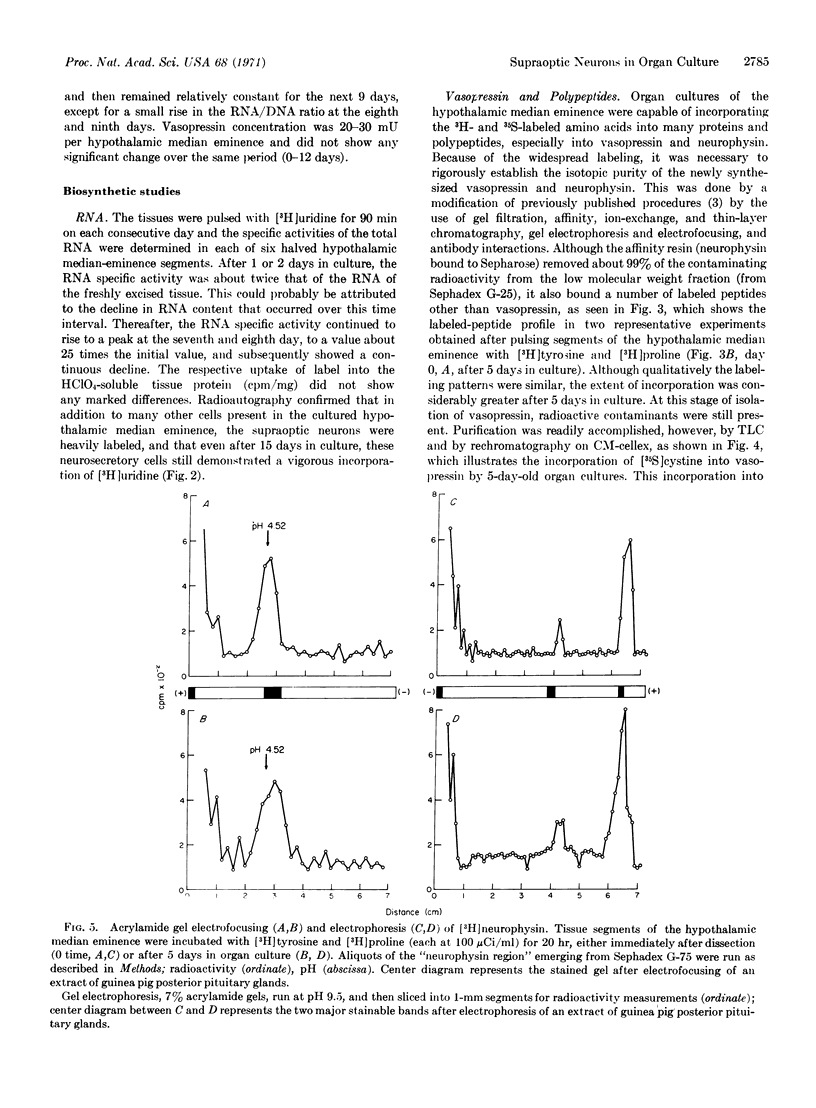
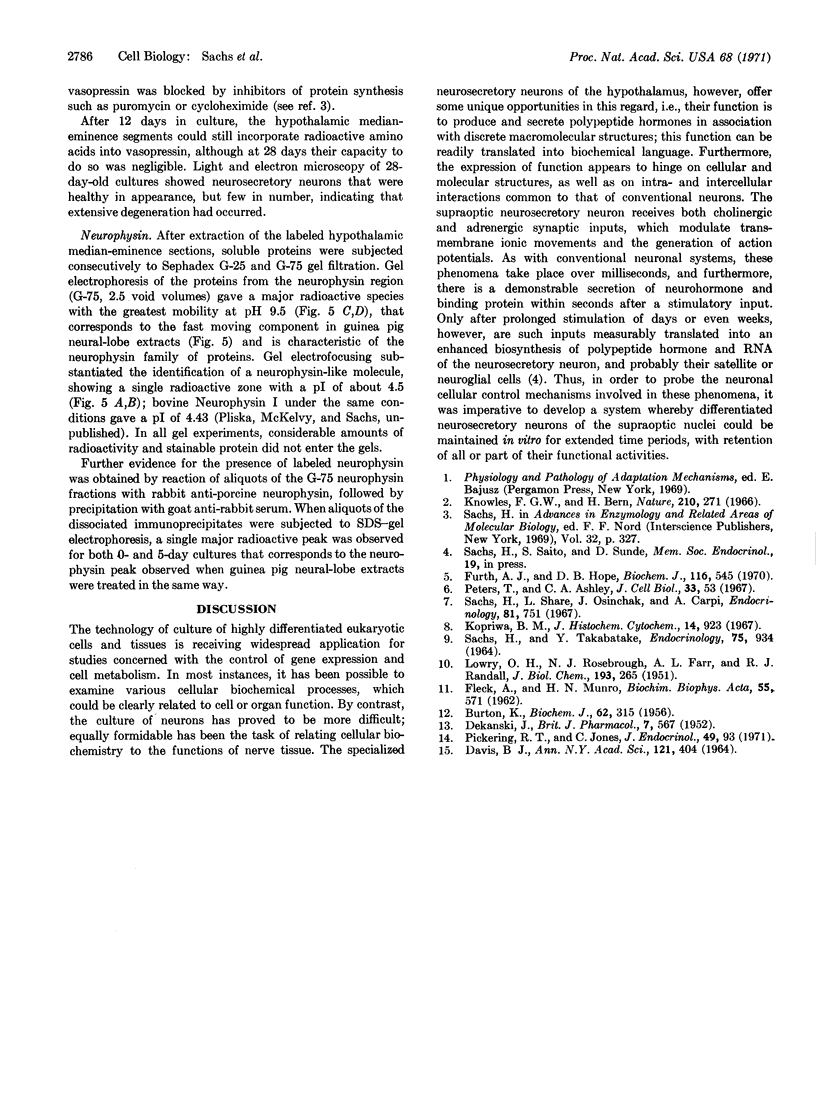
Images in this article
Selected References
These references are in PubMed. This may not be the complete list of references from this article.
- BURTON K. A study of the conditions and mechanism of the diphenylamine reaction for the colorimetric estimation of deoxyribonucleic acid. Biochem J. 1956 Feb;62(2):315–323. doi: 10.1042/bj0620315. [DOI] [PMC free article] [PubMed] [Google Scholar]
- DAVIS B. J. DISC ELECTROPHORESIS. II. METHOD AND APPLICATION TO HUMAN SERUM PROTEINS. Ann N Y Acad Sci. 1964 Dec 28;121:404–427. doi: 10.1111/j.1749-6632.1964.tb14213.x. [DOI] [PubMed] [Google Scholar]
- DEKANSKI J. The quantitative assay of vasopressin. Br J Pharmacol Chemother. 1952 Dec;7(4):567–572. doi: 10.1111/j.1476-5381.1952.tb00723.x. [DOI] [PMC free article] [PubMed] [Google Scholar]
- FLECK A., MUNRO H. N. The precision of ultraviolet absorption measurements in the Schmidt-Thannhauser procedure for nucleic acid estimation. Biochim Biophys Acta. 1962 May 14;55:571–583. doi: 10.1016/0006-3002(62)90836-3. [DOI] [PubMed] [Google Scholar]
- Furth A. J., Hope D. B. Studies on the chemical modification of the tyrosine residue in bovine neurophysin-II. Biochem J. 1970 Feb;116(4):545–553. doi: 10.1042/bj1160545. [DOI] [PMC free article] [PubMed] [Google Scholar]
- Knowles F., Bern H. A. Function of neurosecretion in endocrine regulation. Nature. 1966 Apr 16;210(5033):271–272. doi: 10.1038/210271a0. [DOI] [PubMed] [Google Scholar]
- Kopriwa B M. A semiautomatic instrument for the radioautographic coating technique. J Histochem Cytochem. 1966 Dec;14(12):923–928. doi: 10.1177/14.12.923. [DOI] [PubMed] [Google Scholar]
- LOWRY O. H., ROSEBROUGH N. J., FARR A. L., RANDALL R. J. Protein measurement with the Folin phenol reagent. J Biol Chem. 1951 Nov;193(1):265–275. [PubMed] [Google Scholar]
- Peters T., Jr, Ashley C. A. An artefact in radioautography due to binding of free amino acids to tissues by fixatives. J Cell Biol. 1967 Apr;33(1):53–60. doi: 10.1083/jcb.33.1.53. [DOI] [PMC free article] [PubMed] [Google Scholar]
- Pickering B. T., Jones C. W. Isolation of radioactive oxytocin and vasopressin from the posterior pituitary gland of the rat after the injection of labelled tyrosine into the cerebrospinal fluid. J Endocrinol. 1971 Jan;49(1):93–103. doi: 10.1677/joe.0.0490093. [DOI] [PubMed] [Google Scholar]
- TAKABATAKE Y., SACHS H. VASOPRESSIN BIOSYNTHESIS. 3. IN VITRO STUDIES. Endocrinology. 1964 Dec;75:934–942. doi: 10.1210/endo-75-6-934. [DOI] [PubMed] [Google Scholar]




